Thursday 30th November, 2017
If we agree with Darwinian ‘survival-of-the-fittest’ laws, humans have survived as the “fittest” species that have evolved to manage all other life-forms in order to sustain “human growth”- overpopulation and overconsumption.
If we don’t agree with anything Darwinian but nevertheless buy into the notion that humans are “above” all other species, we still arrive at the same conclusion: other life forms need management to accommodate human growth.
That’s a situation that can’t continue forever.
Endless growth in a world of finite resources is impossible.
SIXTY PERCENT OF WILD PRIMATE SPECIES ARE HEADING TOWARDS EXTINCTION
As the human population grows and we need more and more space, we continue to encroach on the habitats of wild species. According to the most recent scientific assessment, human influence (anthropogenic activity) has caused 60% of wild primate species to head towards extinction with three quarters declining steadily.
Agricultural growth and habitat loss are believed to be the most influential factors; forest habitats are destroyed and primate populations are tainted by hunting and trade. Climate change and human diseases are some of the other threats facing primates.
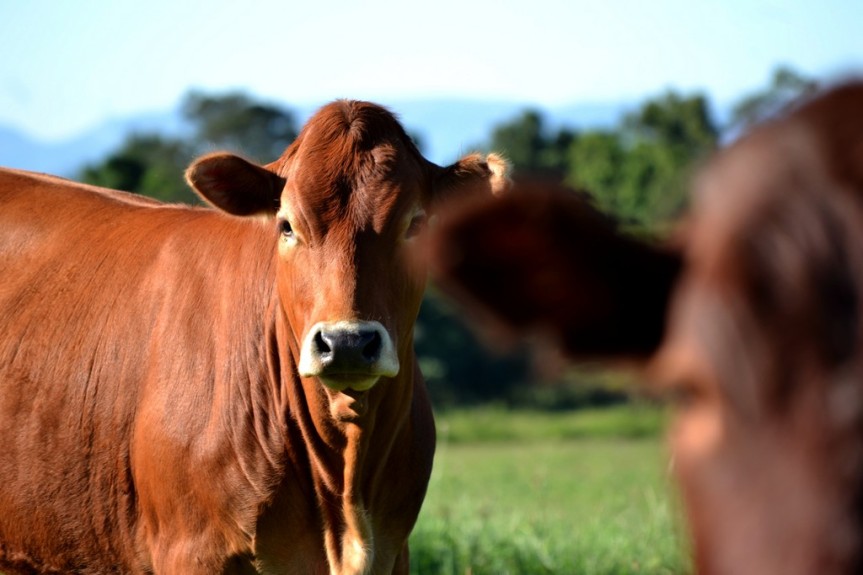
- An encounter with cows. Samango site 1. Midlands, Kwazulu Natal
While nonhuman primates – our closest biological relatives – exist for themselves, they also play a crucial role in maintaining forest integrity and contributing to a healthy biodiversity.
Biodiversity – biological diversity – is the link between all organisms on earth, where every species has an essential role in the web of life. A biodiversity crisis not only impacts negatively on the environment that all life relies on to survive, it also destructively influences human health and our livelihoods.
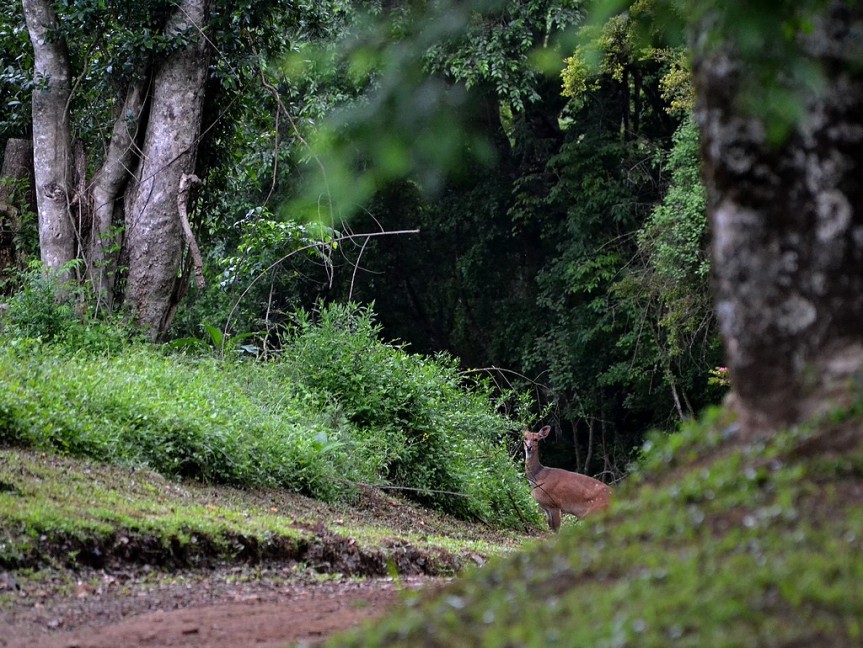
WHY PRESERVE THE SAMANGO?
The main threats facing the samango – and the forests they reside in- are linked to habitat loss – deforestation, degradation and fragmentation. Samango monkeys are considered to be poor dispersers, hence, do not move far distances between forest patches.
The samango is found exclusively in forests and represents the southernmost extent of the range of arboreal guenons in Africa. South Africa’s forest biome is the most fragmented and vulnerable biome. It is also the smallest, comprising 0,1% of the country.

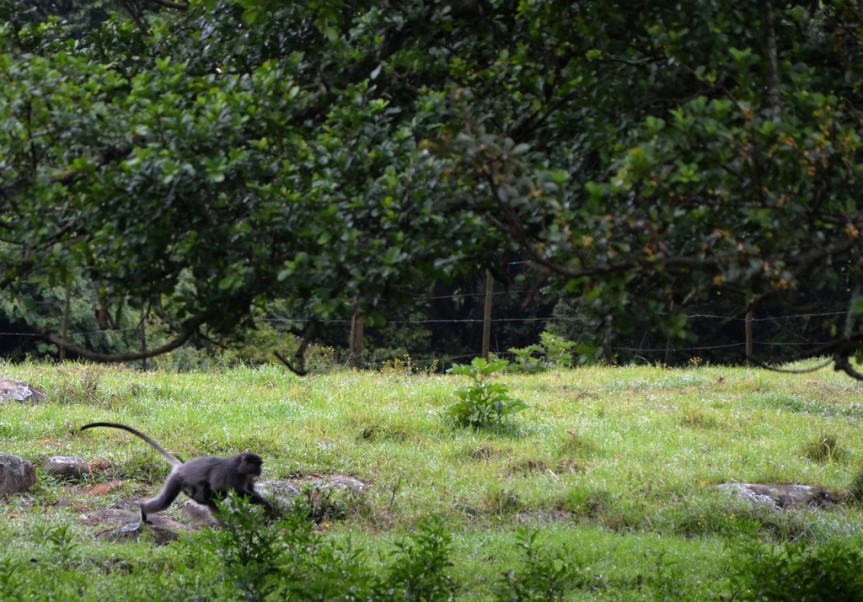
THE THREATENED SAMANGO
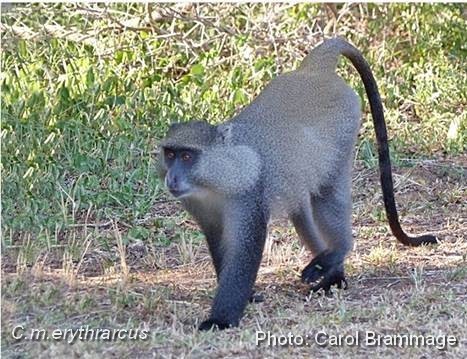
Two subspecies from southern Africa are officially recognized: Cercopithecus albogularis erythrarchus (distributed from northern KwaZulu-Natal – north of the Umfolozi River – through eastern and northern South Africa to Zimbabwe and Mozambique) and Cercopithecus albogularis labiatus (distributed from the Eastern Cape north-eastwards to the midlands of KwaZulu-Natal). However, three distinct subspecies ; C. a. labiatus, C. a. erythrarchus and C. a. schwarzi have been identified in a study conducted by Linden, Wimberger et al – New Insights into Samango Monkey Speciation in South Africa.

The subspecies that is the subject of our study in the midlands of Kwazulu Natal – Cercopithecus albogularis labiatus – is nationally classified as endangered. (More information on the classification of samangos can be found here: About the Samango Monkey
WHERE HUMANS AND SAMANGOS CO-EXIST
Important environmental questions are raised when wild animals – and in this case, a threatened, forest-dwelling primate species – adapt to an environment that is dominated – and modified – by humans. Those of us who share our space with samangos can learn more about how to co-exist by looking at studies that have been conducted in other areas.

- Running across a paddock a male adult samango heads towards a fig tree
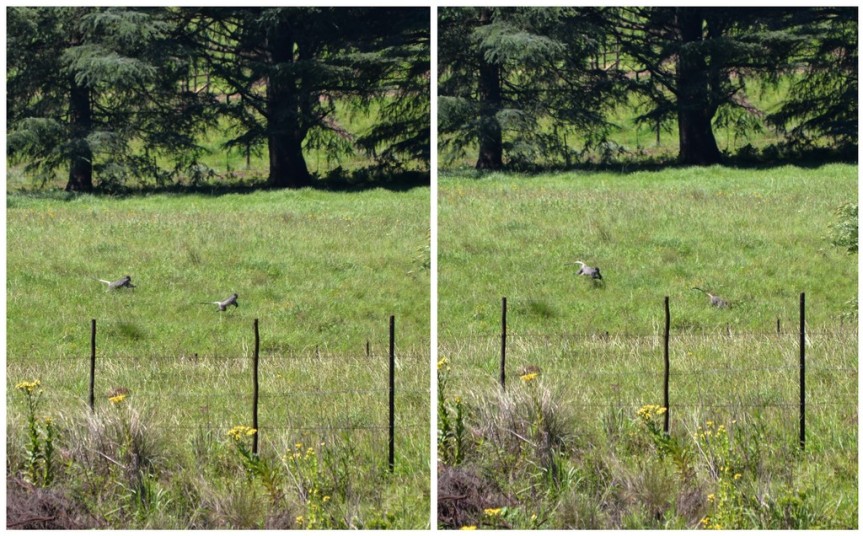


Recent research conducted in the Amathole mountain range in the Eastern Cape found that samango monkeys using human-modified habitats could be at risk: the consumption of exotic food sources may have detrimental effects on health, their role as seed dispersers in indigenous forests could be affected, and human-primate conflict could increase. Additionally, monkeys using these habitats run the risk of being run over by cars, killed by dogs, electrocuted on pylons, shot by pellet guns or trapped in snares. (Wimberger et al.2017. Reliance on Exotic Plants by Two Groups of Threatened Samango Monkeys, Cercopithecus albogularis labiatus, at their Southern Range Limit.).
To manage (and help preserve) samango monkeys that live in human-modified landscapes, the researchers advise us to:
1. Phase out the planting of exotic plant species and
2. Plant indigenous species in gardens.
Posted by Karin Saks





One thought on “Declining primate populations – where samangos and humans meet”